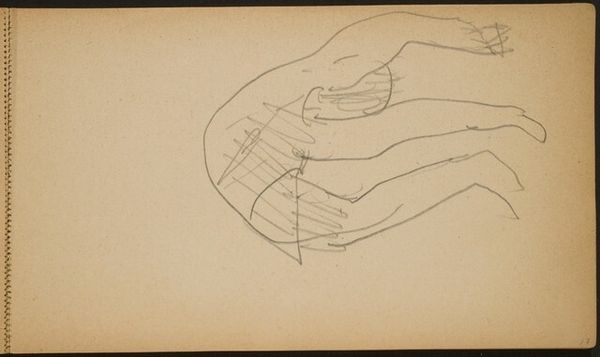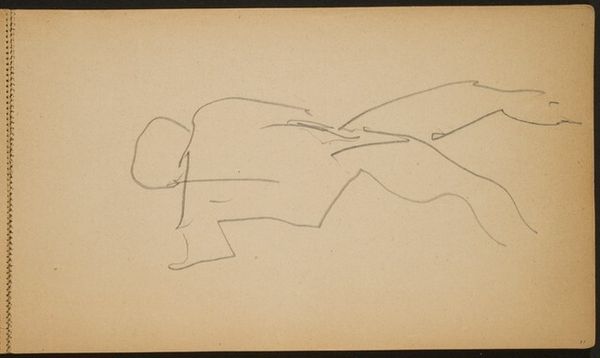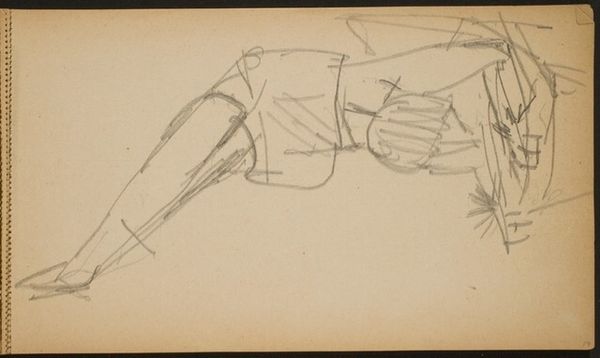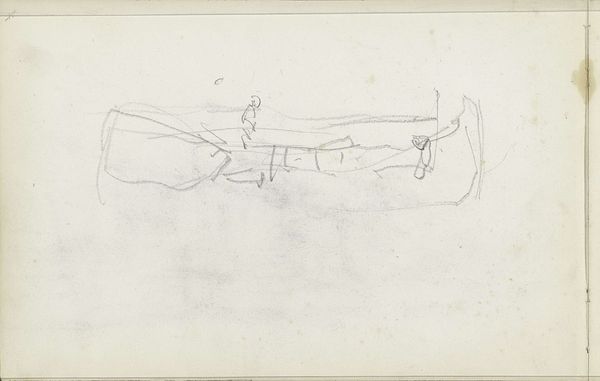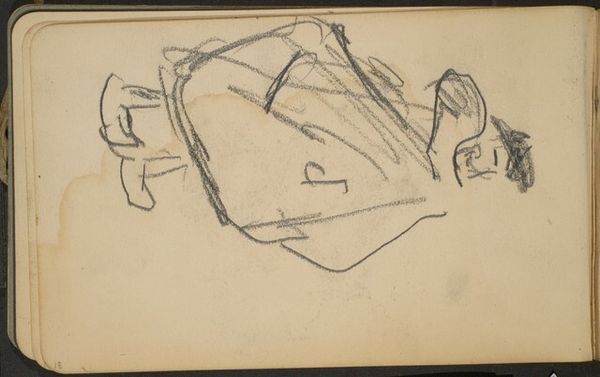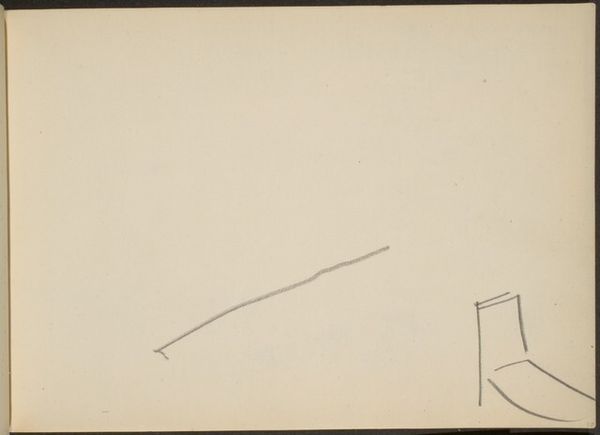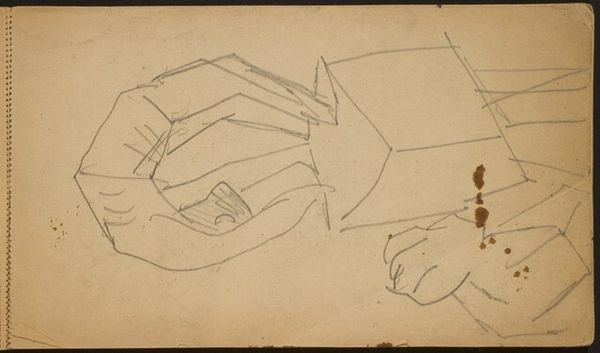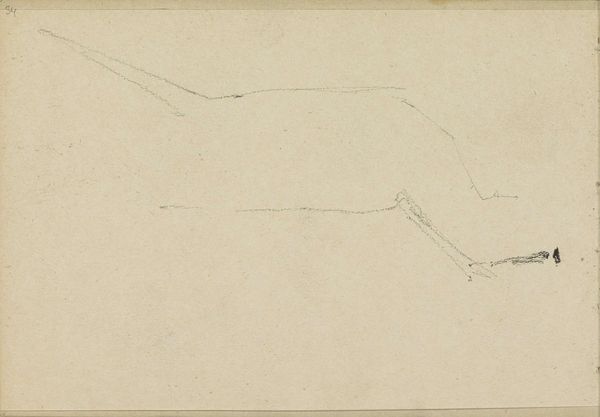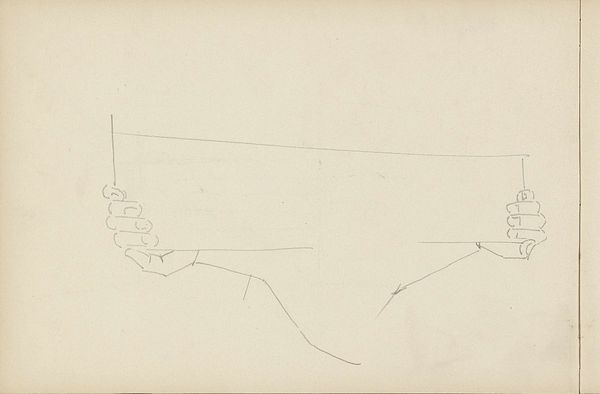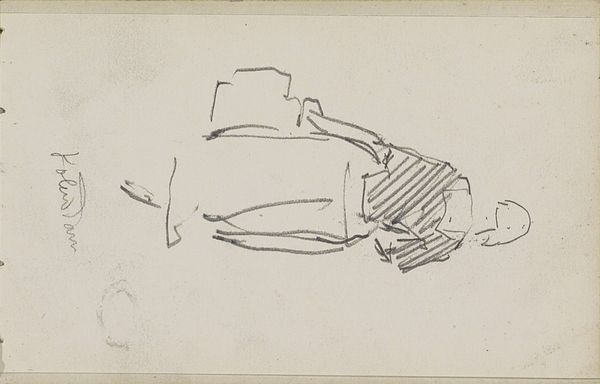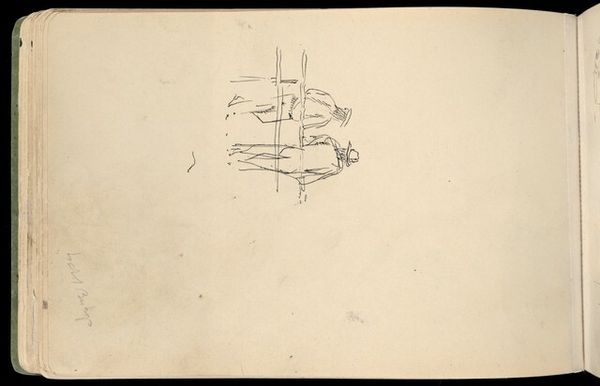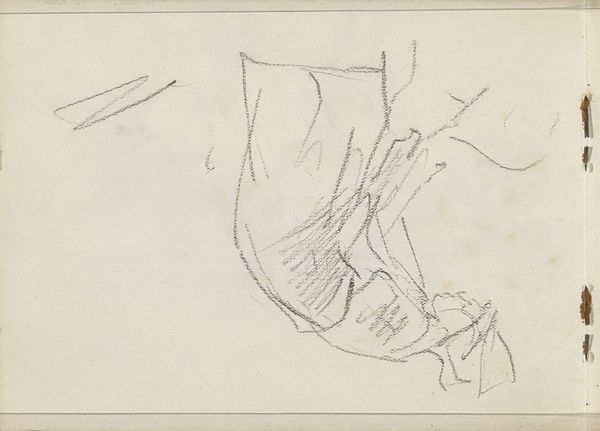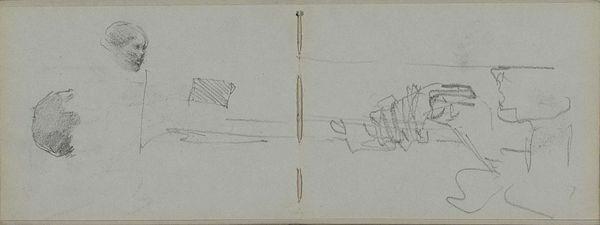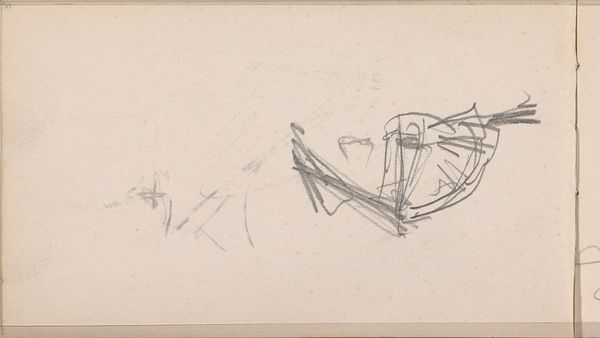![Akrobat, in die Brücke gehend (Acrobat Bending Backward) [p. 9] by Max Beckmann](/_next/image?url=https%3A%2F%2Fd2w8kbdekdi1gv.cloudfront.net%2FeyJidWNrZXQiOiAiYXJ0ZXJhLWltYWdlcy1idWNrZXQiLCAia2V5IjogImFydHdvcmtzLzA1ODQ5NjYxLTc2YzItNDI1Yy04YzVlLWY4MjA4NWRjNjBlNy8wNTg0OTY2MS03NmMyLTQyNWMtOGM1ZS1mODIwODVkYzYwZTdfZnVsbC5qcGciLCAiZWRpdHMiOiB7InJlc2l6ZSI6IHsid2lkdGgiOiAxOTIwLCAiaGVpZ2h0IjogMTkyMCwgImZpdCI6ICJpbnNpZGUifX19&w=1920&q=75)
Akrobat, in die Brücke gehend (Acrobat Bending Backward) [p. 9]
0:00
0:00
drawing, pencil
#
drawing
#
pencil sketch
#
figuration
#
pencil
Dimensions: sheet: 11 x 20.5 cm (4 5/16 x 8 1/16 in.)
Copyright: National Gallery of Art: CC0 1.0
Curator: Here we have Max Beckmann’s sketch, “Akrobat, in die Brücke gehend,” or “Acrobat Bending Backward." Editor: There's a sense of lightness despite the acrobatic posture—the minimalist lines seem to capture a moment of poise, perhaps just before or after great exertion. It almost appears suspended. Curator: That lightness is characteristic of preparatory sketches like this. What is interesting, though, is how this deceptively simple pencil drawing relates to Beckmann's larger socio-political context. There’s something of a societal bridge being represented as well, an acceptance and appreciation. After the horrors he witnessed in World War I, he actively sought motifs celebrating human resilience, flexibility, and adaptation within the rapidly shifting landscape of Weimar Germany. Editor: That contortion, that reaching backward… it seems as much a reaching into the self as an act of physical prowess. I see it echoed in mythological figures of transformation, bending toward some animal or supernatural state. It evokes a cultural memory, doesn’t it, of humankind's fluid relationship with both its physical and spiritual being? The simple nature of the form seems so universal as to create a link of cultural understanding over great stretches of time and distance. Curator: The image resonates differently depending on societal vantage point. Viewed from, say, an increasingly nationalistic viewpoint that arose soon after the image was captured, Beckmann’s figures of the ‘20s became controversial. They symbolize the moral and physical decadence that the ascendant conservative forces came to scorn, associating this "freedom" with what they saw as cultural breakdown. The flexibility suggested by the sketch took on entirely different meaning within political and ideological battle. Editor: But it’s interesting how these archetypes reappear in altered social contexts. Here, it's in Weimar Germany’s response to social stress with this sense of pushing boundaries. The body becomes this contested site, this symbol... And so that’s always the case, the symbolism bends to the societal climate as you said. It just demonstrates again that cultural imagery has many functions and speaks many languages at the same time. Curator: Yes, exactly! Editor: Quite fascinating how much this simple sketch tells us! Curator: Absolutely, an image deeply embedded in socio-political contexts.
Comments
No comments
Be the first to comment and join the conversation on the ultimate creative platform.
